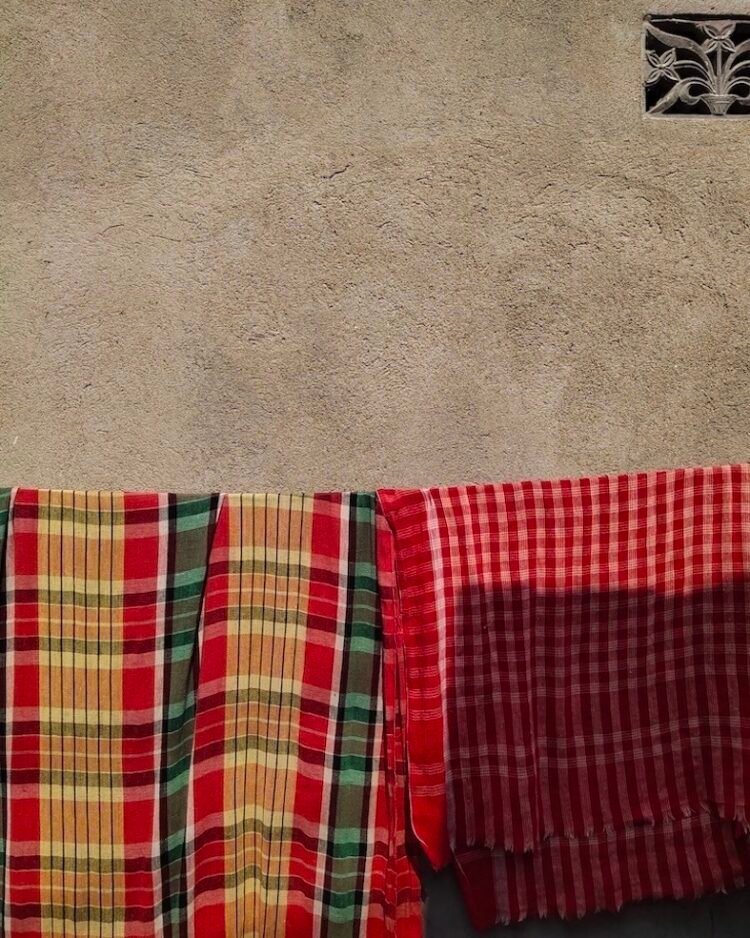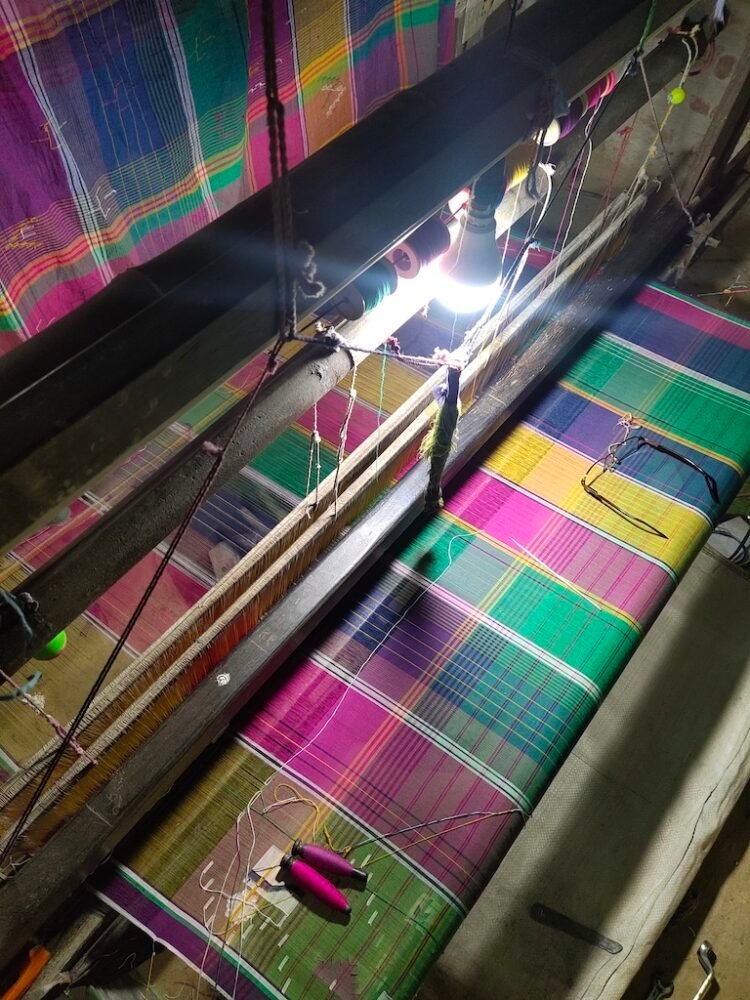16.03.2022
MADRAS CHECKS – A SYMBOL OF EGALITARIAN FABRIC
Madras Plaid is strongly associated with summertime and bright colours. With its breathable, lightweight characteristics and bright colours, it is considered to be the plaid of summer. India’s peasant class wore Madras Checks in the 12th century in the village of Madraspatnam (Madras now known as Chennai). The plaid lungi was originally worn as bottom wear; interestingly, the traditional pattern found on the largely blue and white lungis. Mass production and export of Madras fabric began with the arrival of the European colonizers. In the early 1600s, Dutch traders arrived in India to trade calico cloth. In 1857, the British East Indian Company arrived in India and discovered the beautiful fabric known as Madras Checks. The East India Company established a trade-in Madras, early in the 17th century. To establish a flourishing labour supply chain, the East India Company promised 30-years exemption duties for Indian weavers in Madras. This led to the enormous number of weavers settling in Madras during this time. In the initial times, it was British trade that made Madras Checks fabric for global trade. As the fabric spread across the globe, it became known by different names in eastern and western cultures. In Africa, the fabric was locally known as Injiri (meaning Real India). The Injiri became an important part of African culture as it was given to women after childbirth or as a gift to the families of deceased loved ones.
The original technique of Madras checks in India involved vegetable dyed yarn and it was hand-woven on a pit loom. It has the same pattern on both sides of the Authentic Madras; In fact, it is the best example of an environmentally friendly fabric that was both soft and breathable for the hot and humid climate of the coastal region. A short-staple cotton variety was used for the yarns and dyed with vegetable dyes. Initially, the yarns were carded by hand and had visible slubs. Its slubs and imperfections, a characteristic of handmade work, are what gave the fabric its distinctive texture.


Weaving is carried out in the weavers’ houses or loom sheds constructed by the master weavers. The counts of yarns generally used are 60s X 40s. Other popular counts are 60s X60s and 80s X 80s. After scouring to remove the natural dirt, the yarns are dyed with Vat or Naphthol dyes. It is carried out in and around weaving villages by local dyeing experts. The traditional colours are red, blue, green, purple, maroon, etc. Yarns are normally dyed in darker shades to counteract the white, especially in checked patterns.
As the first preparation process, the dyed yarn hanks are turned into a linear form by winding them on bobbins, preparing fixed yarn lengths for weaving. Next, a horizontal warping wheel is used to create the warp in the ball form. Usually, this is the work of women. After the warping process, the ball warp is stretched to undergo sizing. The sizing paste composed of rice starch and coconut oil is spread out on the stretched yarn with the help of special brushes made out of indigenous root fibres. The weaving is done on a fly shuttle pit loom with two harnesses. It is placed on the ground with its two peddles placed in a dug pit. The weaver sits half inside the pit and operates the two pedals to move the two harnesses up and down to form the shed through which the shuttle moves sideways to interlace the filling into the warp.
The Madras is not only known for its colourful stripes and checks, but it is also a lively and colourful plaid created within a variety of bold colours, which is an expansion of its original staple colours of red and blue and black created with the limited vegetable dyes used at that time to dye the cloth.

After a corporate scandal in 1958, this fabric rose to its greatest heights in the fashion world. Madras check, it is said that due to the delicate nature of the fabric if it was not washed correctly, the colours would tend to bleed; leading to the concept of ‘Bleeding Madras’. Historically, this goes back to the origins of the Madras cloth, when weavers in India used natural vegetable dyes, which bled naturally when damp. As a result, the bright colours in the fabric would fade into new, unique designs of muted colours. Eventually, this became a selling point of the product, since no two pieces of fabric were alike after bleeding.
It is fascinating to see a humble piece of fabric become a symbol of affluence and status hundreds of years later. From colonisers to colonised, the affluent to the masses, the Madras check clothed everyone to an equal standard. Madras check is the core technique used in its garment by Injiri, the label. These checkered textiles of Madras have been the source of inspiration for the brand for years and kept using this age-old design language in different colours.

